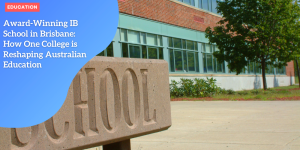From Dysfunction to Excellence: How School Leaders Can Build Unshakeable Team Trust
Anúncios
The Foundation of High-Performing School Teams
More Than Just Individual Talent
While talented educators are essential, great schools rely on more than just individual brilliance.
A cohesive, high-performing team creates an environment where talent is amplified and challenges are tackled collaboratively.
Schools must transcend a reliance on star teachers and foster a community of shared goals and collective effort.
The Role of Intentional Team-Building
Intentional team-building is a critical component of effective educational leadership.
It is not enough to bring individuals together and hope they will work well as a team.
Leaders must actively create opportunities for team members to build trust, develop mutual respect, and align their efforts towards common goals.
This effort requires clear communication, consistent practices, and a culture that values collaboration.
Impact of Strong Team Culture
A robust team culture significantly impacts teaching quality and student outcomes.
When educators operate within a supportive and collaborative environment, they are more likely to share best practices, tackle challenges creatively, and support each other’s professional growth.
Students benefit from this cohesive effort through improved instruction, a sense of stability, and a more positive learning environment.
High-performing teams do not happen by accident.
They are the result of intentional, strategic leadership committed to fostering trust and collaboration.
As we delve deeper into the dynamics of school leadership, we uncover the pivotal role of trust in creating an environment where educators and students thrive.

Trust: The Cornerstone of Educational Leadership
Why Trust is Fundamental for Collaborative School Environments
Building a collaborative school environment relies heavily on trust.
When teachers, staff, and administrators trust each other, they create a foundation that supports open communication, shared responsibility, and mutual respect.
Trust is the bedrock upon which all successful collaboration is built.
Without it, genuine teamwork is nearly impossible.
Trust transforms a collection of individuals into a unified team working towards the same goals.
How Trust Enables Risk-Taking, Innovation, and Genuine Professional Growth
Trust encourages educators to take risks and innovate.
When teachers feel trusted, they are more likely to experiment with new teaching methods, share creative ideas, and collaborate on projects.
This atmosphere fosters professional growth, as it allows staff to learn from both successes and failures without fear of judgment.
A school culture that values trust can turn mistakes into valuable learning experiences, propelling the entire team forward.
The Relationship Between Trust Levels and Team Performance in Schools
The link between trust levels and team performance is undeniable.
High levels of trust correlate with increased job satisfaction, higher teacher retention rates, and improved student outcomes.
Trust facilitates smooth, efficient collaboration, ensuring that team efforts are cohesive and purposeful.
When school leaders prioritize trust, they not only enhance individual performance but also elevate the overall effectiveness of the educational institution.
Transition
With trust as the cornerstone of educational leadership, it is crucial to recognize and mitigate common pitfalls that can undermine this essential element.
Understanding these trust killers is the next step in fostering a thriving, high-functioning school environment.
Common Trust Killers in School Leadership
The Devastating Impact of Inconsistency Between Words and Actions
One of the most destructive trust killers in school leadership is the inconsistency between what leaders say and what they do.
When principals make promises or set expectations and then fail to follow through, it creates a climate of uncertainty and mistrust.
Staff members rely on the consistency of their leaders’ actions as a gauge for reliability and dependability.
When words and actions don’t align, it quickly breeds skepticism and erodes the foundational trust necessary for a functional, collaborative environment.
Lack of Transparency and Avoided Conversations
Transparency is pivotal in fostering a trusting school environment.
When leaders withhold information or avoid tough conversations, it not only sows doubt but also increases anxiety among staff.
They may feel that they are not being treated as equal partners in the educational mission.
Openness about decision-making processes, school performance metrics, and even the challenges being faced helps build communal knowledge and trust.
Avoiding these conversations means missed opportunities for genuine connection and mutual understanding, leading to disengagement and a fragmented team spirit.
The Consequences of Failing to Genuinely Listen to and Acknowledge Staff Input
Listening might seem simple, but it requires intent and action to be truly effective.
When school leaders fail to listen to or acknowledge staff input, it sends a message that their opinions and contributions are not valued.
This can result in decreased morale and a workforce that feels undervalued and underappreciated.
To build trust, leaders must not only listen but also act on the feedback they receive, showing that they regard their team as essential partners in the school’s journey to excellence.
When school leaders integrate these practices consistently—aligning their actions with their words, maintaining transparency, and genuinely valuing staff input—they lay down the foundation of unshakeable trust.
This trust then becomes the bedrock upon which high-performing, collaborative teams are built, ultimately leading to enhanced teaching quality and student outcomes.
Building Unshakeable Trust: Practical Strategies
The Power of Living Your Values
School leaders must consistently live their values rather than simply stating them.
When actions align with stated values, trust naturally follows.
Leaders who practice what they preach model integrity, making it clear to their teams that their words are not empty promises but commitments backed by action.
This consistency inspires confidence and creates an environment where staff feel secure, valued, and aligned with the school’s mission.
Embracing Vulnerability as a Leadership Strength
Embracing vulnerability is often seen as a leadership weakness, but it’s actually a strength.
When leaders openly share their challenges and acknowledge their mistakes, they create a culture of transparency.
This honesty fosters trust because it shows that leaders are human, approachable, and invested in genuine growth.
Vulnerability also invites reciprocal openness from staff, creating deeper, more authentic connections throughout the team.
Creating Systems for Meaningful Dialogue and Mutual Accountability
For trust to flourish, systems that encourage meaningful dialogue and mutual accountability are essential.
This begins with regular, structured opportunities for staff to voice their ideas, concerns, and feedback.
Leaders should actively listen and demonstrate a commitment to act on the input provided.
Implementing collaborative decision-making processes ensures that all team members feel involved and valued.
To sustain trust, these systems should also include mechanisms for holding everyone—leaders and staff alike—accountable for their actions and contributions, reinforcing a culture of shared responsibility and continuous improvement.
By embedding these practical strategies into daily practice, school leaders can transform their teams from being simply functional to truly high-performing.
This dynamic sets the stage for not only academic success but a thriving, collaborative school culture.
Recognizing the ‘Dysfunction Junction’
Functional teams are a cornerstone of successful schools.
However, when dysfunction creeps in, it can thwart even the best intentions, leading to stale conversations and stagnant progress.
Recognizing the key warning signs of dysfunction is crucial for any school leader wanting to foster a productive and harmonious team environment.
Four Key Warning Signs
1. Recurring Issues
When the same problems keep resurfacing, it’s often a sign that only the symptoms, not the root causes, are being addressed.
Like an ice cream truck making the same rounds in your neighborhood, unresolved issues keep popping up, creating a frustrating cycle for everyone involved.
2. Debate Focused Conversations
If team discussions often devolved into debates rather than collaborative problem-solving sessions, it’s a red flag.
When individuals are more interested in who’s right rather than what’s right, it stifles creativity and stymies progress.
3. Over-Reliance on Leadership
Another sign of dysfunction is when staff members become overly dependent on principals or key leaders for answers.
This dynamic inhibits ownership and stifles initiative, making the team as a whole less responsive and agile.
4. Blame Shift
Lastly, when the default reaction to challenges is to blame external factors—parents, students, funding, or policy—rather than reflecting on internal improvements, it’s a telltale sign of dysfunction.
It creates a culture of victimhood rather than problem-solving.
Identifying Symptoms vs. Root Causes
Symptoms are merely surface indicators of deeper issues.
For instance, consistent lateness may be symptomatic of low morale or burnout, while frequent miscommunications might stem from lack of clarity in roles and expectations.
Leaders must delve deeper to uncover and address the root causes of the team’s struggles.
The Danger of Being Debate-Focused
Debate-focused conversations tend to inhibit problem-solving.
When team members are preoccupied with winning arguments, they lose sight of finding mutual solutions.
This adversarial stance breeds division and erodes trust.
Solution-focused conversations, on the other hand, emphasize collective problem-solving, fostering unity and innovation.
By being vigilant in recognizing these signs and understanding the difference between superficial fixes and deep-seated solutions, school leaders can promptly address issues before they morph into chronic dysfunction.
The journey from dysfunction to excellence is paved with proactive steps and consistent efforts to cultivate a culture of trust and collaboration.
Escaping the Dependency Trap
The Dependency Trap stifles initiative and disrupts shared accountability in schools.
Relying too heavily on principals for answers hinders teams from developing their problem-solving skills and taking ownership of their responsibilities.
Recognizing Over-Reliance on Principals
To address this issue, school leaders must identify signs of over-reliance:
- 🧑🏫Staff deferring decisions to the principal.
- 🧑🏫Limited initiative from team members.
- 🧑🏫Dependence on the principal to resolve conflicts.
The Dangers of External Blame
Another symptom of the Dependency Trap is the tendency to blame external factors for internal challenges.
This can manifest as:
- 🧑🏫Blaming parents, students, or policies for issues.
- 🧑🏫Avoiding self-reflection and personal accountability.
- 🧑🏫Focusing on external problems rather than internal solutions.
Strategies to Reset Expectations
To reset expectations and encourage shared accountability:
- 🧑🏫Foster a culture where team members are empowered to make decisions.
- 🧑🏫Encourage staff to take ownership by delegating responsibilities.
- 🧑🏫Engage in reflective practices that focus on internal growth and improvement.
By addressing these dependency issues, school leaders create an environment where trust, initiative, and shared accountability thrive.
This sets the stage for transforming conflicts into opportunities and leveraging diverse perspectives for innovative solutions.
Transforming Conflict into Opportunity
Reframing Conflict as a Catalyst for Growth and Innovation
Conflict in schools is inevitable, but when managed constructively, it can serve as a driving force for growth and innovation.
By approaching conflict with the mindset that diverse perspectives lead to better solutions, school leaders can turn potentially divisive situations into collaborative opportunities.
Embracing the fact that differing viewpoints are fundamental to the creative process fosters an environment where conflict becomes an asset, not a threat.
Stephanie Brown, an expert in leadership, emphasizes that all relationships experience conflict and that it’s essential to listen deeply to various perspectives to surface new and better ideas.
Leaders should cultivate a mindset that sees differing viewpoints as catalysts for innovation.
Why Diverse Perspectives Are Essential to Creative Problem-Solving
Harnessing diverse perspectives ensures a more comprehensive approach to problem-solving.
When team members with varied experiences and viewpoints are encouraged to share their thoughts, it broadens the horizon of possible solutions.
True creativity emerges when different perspectives are brought to the table, allowing teams to explore new ways of thinking actively.
Allowing space for all team members to contribute leads to a richer, more inclusive decision-making process.
This inclusivity breeds trust and promotes a culture where everyone feels valued and heard, ultimately driving robust, innovative solutions that benefit both teaching quality and student outcomes.
Structured Approaches to Navigate Disagreements Productively
To navigate conflicts productively, school leaders must rely on structured problem-solving approaches.
Stephanie Brown suggests the following steps for principals to create an environment where conflicts lead to constructive outcomes:
| Strategy | Implementation | Key Benefits | Practical Techniques |
|---|---|---|---|
| Establish Shared Goals | Define common objectives | • Creates alignment • Reduces positional thinking • Focuses energy productively |
• Vision mapping • “North Star” exercises • Success criteria definition |
| Generate Options Collectively | Structured brainstorming | • Expands solution space • Increases buy-in • Leverages diverse perspectives |
• Brainwriting • Round-robin ideation • Affinity grouping |
| Agree on Next Steps | Co-created action plan | • Builds accountability • Transforms talk into action • Strengthens trust |
• SMART action items • RACI matrix • Follow-up protocols |
By applying these methods, school leaders can transform conflicts into productive discussions that strengthen team alignment and trust.
This approach not only resolves immediate issues but also contributes to a deeper culture of collaboration and continuous improvement.
Collaborative Problem-Solving: The Trust Multiplier
Techniques for Establishing Shared Goals During Moments of Disagreement
Disagreements in school teams can be a stumbling block or a stepping stone, depending on how they’re managed.
Establishing shared goals is crucial during these moments.
Here’s how you can make it work:
- Start with the End in Mind: Begin by clarifying the ultimate goal everyone is aiming for. Whether it’s improving student outcomes or tweaking a curriculum, pinpoint the common objective.
- Communicate Clearly: Hold a meeting where everyone has the floor to talk about their perspectives on the goal. Ensure clarity by summarizing what has been agreed upon so far.
- Acknowledge Contributions: Validate every team member’s input. Recognition goes a long way in cementing trust. A simple “I see where you’re coming from” can make a massive difference.
How to Generate Options Collectively Rather Than Imposing Solutions
The temptation to impose solutions can be strong, especially under pressure.
However, a collective approach fosters trust and innovation:
- Brainstorming Sessions: Organize brainstorming sessions, allowing for a free flow of ideas without immediate criticism or dismissal.
- Encourage Diverse Perspectives: Prompt every team member to contribute their viewpoints. Often, the best solutions arise from the least expected opinions.
- Use the “Yes, and…” Technique: This involves building on others’ ideas instead of shutting them down. It’s a great way to expand on possibilities and promote collaboration.
The Importance of Empowering Those Involved in Conflicts to Co-Create Resolutions
Conflicts viewed through a collaborative lens can become opportunities for growth.
Empowering those involved in disagreements to co-create solutions has multiple benefits:
- Builds Ownership: When staff participate in creating resolutions, they develop a sense of ownership over the outcomes, which fosters stronger commitment and follow-through.
- Enhances Mutual Respect: Collaborative problem-solving encourages mutual respect. Each person gets to understand where the other is coming from, which is fundamental in trust-building.
- Strengthens Team Dynamics: Working together on solutions helps in breaking down silos and creating a more cohesive team dynamic.
Creating a culture of collaborative problem-solving in schools is a powerful trust multiplier.
As teams work together towards common goals, generate solutions collectively, and resolve conflicts through co-creation, they create a strong foundation for success.
This forms the bedrock for further transforming school culture into an environment where trust is the norm, positively impacting teaching quality and student outcomes.
From Trust to Excellence: The Leadership Journey
Transforming School Culture Through Trust-Building Practices
Trust-building practices, when consistently applied, transform school culture over time.
By fostering an environment where transparency and accountability are the norms, school leaders can cultivate a culture where teachers feel empowered and motivated.
This transformation does not happen overnight, but through sustained efforts, trust can become the keystone of a thriving educational institution.
The Compounding Benefits of Trust
When trust is pervasive in a school culture, the positive impacts on teacher performance and student outcomes compound.
Teachers who feel trusted are more likely to take risks in their teaching methods, innovate, and collaborate with their peers.
This collaboration can lead to improved teaching quality and ultimately, better student outcomes.
As the cycle of trust and performance feeds into itself, the school continues to grow stronger and more cohesive.
Practical Steps for School Leaders
For school leaders committed to excellence through trust, several practical next steps can be taken:
- Live Your Values: Consistently embody the values you want to see reflected in your team. Make sure your actions align with your words to build credibility.
- Embrace Vulnerability: Share openly with your staff, admit mistakes, and lead with transparency. This inspires others to do the same and promotes a culture of open communication.
- Facilitate Meaningful Dialogue: Create systems that support regular, meaningful conversations among staff. This ensures that feedback is heard and acted upon, reinforcing trust and mutual respect.
By embedding these practices into the fabric of the school’s culture, leaders can guide their teams from trust to excellence, establishing a foundation that will support ongoing improvement and success.







